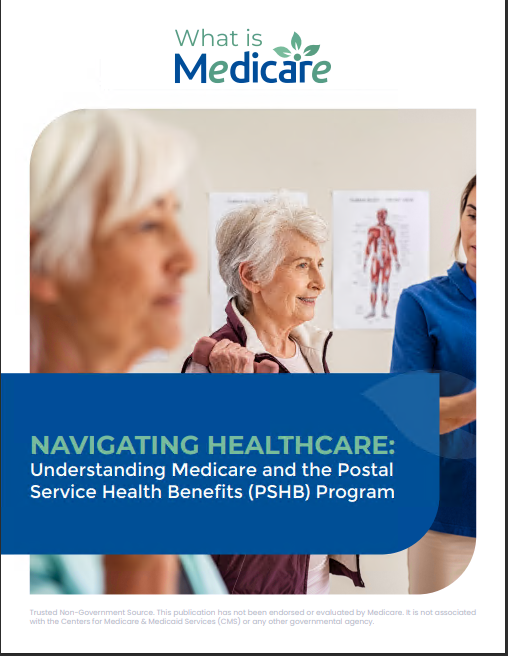Key Takeaways
-
Understanding Medicare Part D‘s coverage limits and formulary tiers is crucial to avoid unexpected prescription costs.
-
Annual changes in Medicare Part D plans can affect drug coverage and out-of-pocket costs, requiring regular plan reviews.
Prescription Coverage Under Medicare Part D: What You’re Not Being Told
Navigating the intricacies of Medicare Part D, the prescription drug coverage plan, can be challenging for beneficiaries. With its structured tiers, varying premiums, and annual changes, the plan is not as straightforward as it may seem. Understanding what Part D covers—and what it doesn’t—is essential for avoiding unexpected costs and ensuring access to necessary medications.
The Basics of Medicare Part D
Medicare Part D is a federal program designed to help Medicare beneficiaries cover the costs of prescription drugs. It is optional and available to anyone enrolled in Medicare Part A or Part B. Beneficiaries can purchase Part D coverage through private insurance companies that have been approved by Medicare. These plans come with a variety of premiums, deductibles, and formularies—the lists of drugs covered under each plan.
However, not all prescription drugs are covered, and the coverage is subject to certain limitations. This is where many beneficiaries find themselves facing unexpected costs. The drugs covered by Medicare Part D are divided into different tiers, with varying copayments or coinsurance for each tier. Typically, lower-cost generic drugs are placed in the lower tiers, while higher-cost brand-name drugs and specialty medications are placed in the upper tiers.
Formulary Restrictions: What You Need to Know
One of the critical aspects of Medicare Part D that beneficiaries often overlook is the formulary. A formulary is a list of medications that a particular Part D plan covers. Not all drugs are included in every plan’s formulary, and this is where beneficiaries can encounter significant out-of-pocket costs.
Formularies are divided into tiers, typically ranging from Tier 1 to Tier 5. Tier 1 drugs are usually generic and come with the lowest copayment. As the tiers increase, so do the costs, with Tier 5 typically reserved for specialty drugs that are extremely expensive. If a medication you need is not on your plan’s formulary, you may have to pay the full cost out of pocket unless an exception is granted. Additionally, plans can change their formularies from year to year, potentially leaving beneficiaries with reduced coverage for their medications.
Prior Authorization and Step Therapy
Two additional hurdles beneficiaries might face are prior authorization and step therapy. Prior authorization means that your Part D plan requires your healthcare provider to get approval from the plan before it will cover a specific drug. This process can delay access to needed medications and add layers of bureaucracy to receiving care.
Step therapy, on the other hand, requires you to try a less expensive drug on the formulary before the plan will cover a more expensive one. If the initial drug is ineffective, only then will the plan cover the costlier alternative. This approach is intended to control costs but can be frustrating for beneficiaries who already know that the cheaper alternative won’t work for them.
The Donut Hole: A Gap in Coverage
One of the most misunderstood aspects of Medicare Part D is the coverage gap, commonly known as the “donut hole.” This is a period during which beneficiaries must pay a higher share of their prescription drug costs out of pocket. Although the Affordable Care Act aimed to close the donut hole, it still exists in a modified form.
In 2024, after your total drug costs—including what you and your plan have paid—reach a certain limit, you enter the donut hole. During this phase, you will pay a percentage of the drug costs rather than a fixed copayment. For generic drugs, you typically pay 25% of the cost, while for brand-name drugs, the cost is higher. The donut hole continues until your out-of-pocket costs reach the catastrophic coverage threshold, after which your plan will cover most of your drug expenses.
How the Donut Hole Affects You
The impact of the donut hole can be significant, especially for those who take high-cost medications. For example, if you require a brand-name drug that costs $400 per month, you could find yourself paying $100 each month while in the donut hole. These costs can add up quickly, leading to financial strain for those on fixed incomes.
It’s also important to note that not all costs count toward closing the donut hole. For instance, your monthly premiums do not contribute to your out-of-pocket costs in the coverage gap. Understanding these nuances is crucial for budgeting your healthcare expenses.
Catastrophic Coverage: Relief But Not a Cure-All
Once you exit the donut hole, you enter the catastrophic coverage phase. At this point, your out-of-pocket costs significantly decrease. In 2024, you will generally pay 5% of the drug’s cost, or a small copayment, whichever is greater. While this phase offers some relief, it’s important to remember that reaching this stage means you’ve already spent a substantial amount on medications throughout the year.
For beneficiaries with high prescription drug costs, the catastrophic coverage phase can still result in significant expenses, especially for costly specialty drugs. This highlights the importance of understanding the full scope of Part D coverage and planning for potential out-of-pocket costs.
Plan Changes and the Annual Enrollment Period
Medicare Part D plans are not static; they can change from year to year. During the annual enrollment period, which runs from October 15 to December 7 each year, beneficiaries have the opportunity to review and change their Part D plans. This is an essential time to reassess your coverage needs, especially if your medications have changed or if your current plan has altered its formulary or cost structure.
Failure to review your plan annually can result in unexpected costs or reduced coverage. For instance, a medication that was covered in 2023 may not be covered in 2024, or it may have moved to a higher tier, increasing your out-of-pocket expenses.
Tips for Choosing the Right Part D Plan
Selecting the right Medicare Part D plan requires careful consideration of several factors:
-
Formulary Check: Make sure the plan covers all the medications you currently take. Pay special attention to the formulary’s tiers and the associated costs.
-
Cost Analysis: Beyond premiums, consider deductibles, copayments, and coinsurance. The lowest premium plan is not always the most cost-effective if it has higher out-of-pocket costs.
-
Pharmacy Network: Ensure that your preferred pharmacy is within the plan’s network. Some plans offer lower costs if you use specific pharmacies.
-
Plan Flexibility: Consider whether the plan allows for changes during the year if your medication needs change. Some plans may offer better coverage for unexpected health changes.
-
Annual Review: Regularly review your Part D plan during the annual enrollment period to ensure it still meets your needs. Changes in your health or the plan’s formulary can have significant financial implications.
The Role of State Pharmaceutical Assistance Programs
In addition to Medicare Part D, some states offer Pharmaceutical Assistance Programs (SPAPs) to help cover prescription drug costs. These programs can provide additional financial assistance, particularly for those who have low incomes or high drug costs. Each state’s SPAP has its own eligibility requirements and benefits, which can include premium assistance, help with out-of-pocket costs, or coverage for medications not included in the Part D formulary.
Beneficiaries should investigate whether their state offers an SPAP and how it can supplement their Medicare Part D coverage. These programs can be a valuable resource in managing the high cost of prescription drugs.
Appealing a Denied Claim
If your Medicare Part D plan denies coverage for a prescription drug, you have the right to appeal the decision. This process involves several steps, including requesting a coverage determination, filing an appeal, and potentially pursuing further appeals if the initial appeal is denied.
Understanding your rights and the appeals process is crucial for ensuring that you receive the coverage you’re entitled to. It’s also essential to act quickly, as there are deadlines associated with each step of the appeals process.
Navigating Prescription Coverage Under Medicare Part D
Medicare Part D provides vital prescription drug coverage, but it’s not without its complexities. From understanding formularies and coverage gaps to managing annual plan changes, beneficiaries must be proactive in navigating their Part D coverage to avoid unexpected costs and ensure they receive the medications they need. Regularly reviewing your plan and understanding the appeals process are essential steps in managing your healthcare expenses effectively.
Contact Information:
Email: [email protected]
Phone: 7605558901










